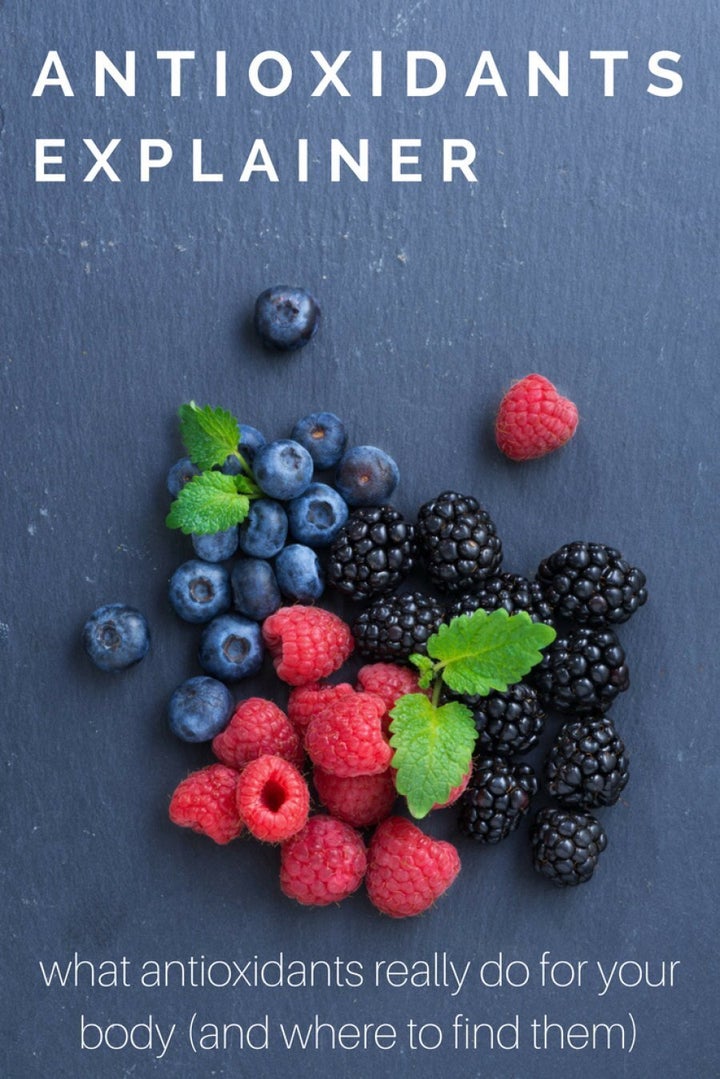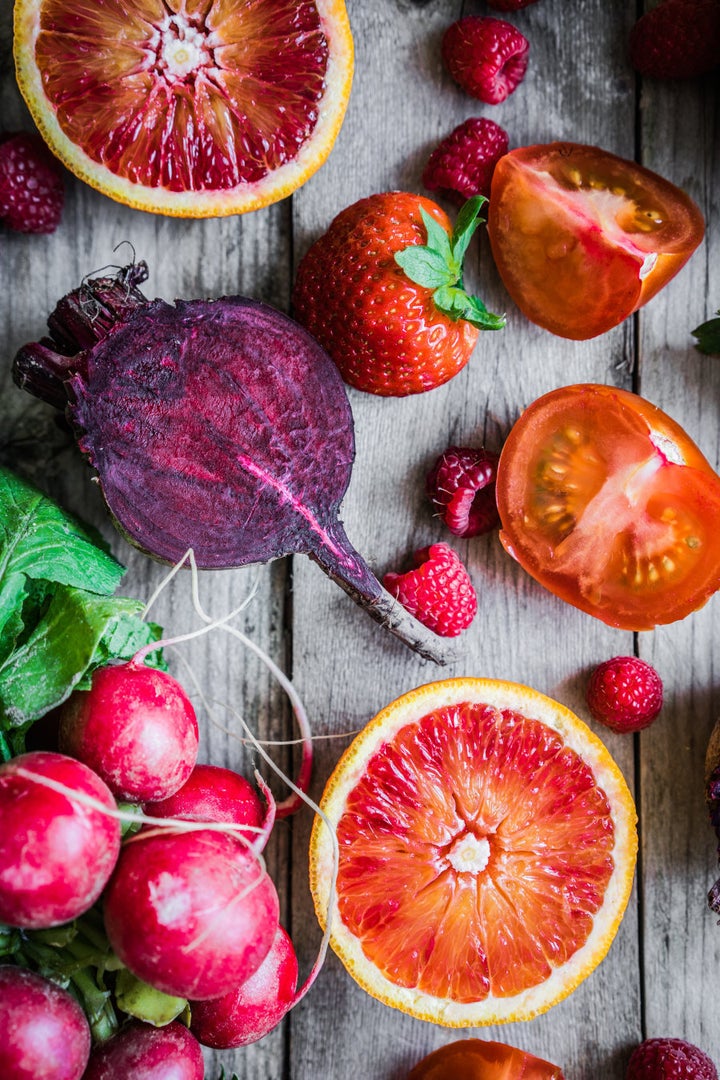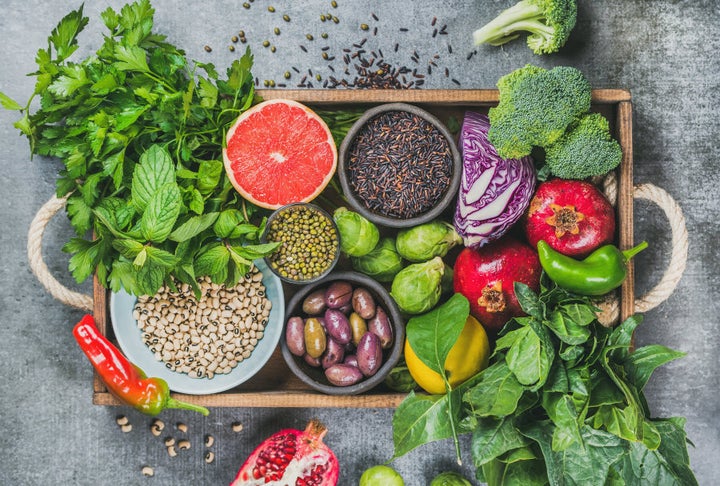Antioxidants, flavonoids, polyphenols. They're words which spring up all the time when we're talking about healthy eating, nutrition and fruit and vegetables, but what do these terms really mean? And why should we care?
To understand antioxidants, flavonoids and polyphenols, we need to first look at 'free radicals'.
Free radicals are generated by our body as a result from either normal metabolic processes or from external sources such as alcohol, tobacco smoke, pesticides and air pollutants. If free radicals overwhelm our body's ability to deal with them, then oxidative stress occurs and, over time, can trigger a number of diseases, including heart disease, liver disease and some cancers (oral, oesophageal, stomach and bowel cancers).
Don't worry. That's where antioxidants come in.

Antioxidants
"Antioxidants help to fight free radicals (unstable molecules) within the body. These unstable molecules can be generated by stress, general metabolism, poor diet, pollution, medication, smoking and alcohol, for example," nutritionist Fiona Tuck told HuffPost Australia.
"If these free radicals are not stabilised, they can lead to oxidation and cell damage, which could potentially lead to ageing and disease. Think of an apple being cut in half and left in the air. Free radicals attack the apple, causing it to oxidise and go brown."
Essentially, antioxidants are compounds which protect our cells against free radical damage.
"Common antioxidants are vitamin C, vitamin E, selenium and carotenoids," nutritionist and celebrity chef Zoe Bingley-Pullin said.
Health benefits of antioxidants:
- Helps protect cells from oxidation and damage;
- Can have an anti-inflammatory and strengthening effect;
- Good for general health and wellbeing, heart health and brain health.

Polyphenols and flavonoids
Flavonoids and polyphenols are natural compounds found in plants which have an antioxidant capacity.
"Flavonoids are types of polyphenols. There are different types of polyphenols dependant on the number of phenol rings they contain," Tuck explained.
"As a general guide, plant foods contain mixtures of polyphenols, with higher levels usually being found in the outer layers of the plants near or in the skin -- for example, lemon rind, grape skin and so on."
So, flavonoids are a class of polyphenols, which are both capable of acting as an antioxidant.
"Flavonoids and polyphenols work together with antioxidants to protect against free radical damage and contribute to the body's overall supply of antioxidants," Bingley-Pullin told HuffPost Australia.
"There is also suggestion that flavonoids and polyphenols may possess antibacterial properties and play a role in anti-inflammatory responses."

Where do we find them?
The best thing about antioxidants is how easily you can get them. Just head to the fruit and veggie section in the supermarket.
"Vibrant-coloured plant-based foods, including spices, have the highest content of antioxidants, polyphenols and flavonoids," Bingley-Pullin said.
Antioxidant-rich foods include: berries, apples and pears, Brassica vegetables (broccoli, cauliflower, cabbage -- especially red cabbage), red grapes, red onions, tomatoes, ginger, spinach, pomegranate, beetroot, carrot, sweet potato, papaya, capsicum, eggplant, garlic, extra virgin olive oil, flaxseeds/linseeds, legumes, walnuts, green and black tea, cocoa/cacao and dark chocolate, cinnamon, rosemary and peppermint.
Basically, eat your fruit and veggies.
Here are some examples of meals and snacks rich in antioxidants, flavonoids and polyphenols:
Snacks
- Green tea and a handful of berries
- Carrot sticks with black bean hummus
- Spinach, broccoli and walnut pesto with fresh vegetable sticks
- Beetroot hummus with fresh vegetable sticks
- Tomato, red onion, capsicum and coriander salsa with avocado on soy/linseed bread or buckwheat crackers
- Square of dark chocolate and green tea
- Smoothie using milk of choice and cacao, berries and flaxseeds
Meals
- Lentil stew with capsicum, garlic, onions and pumpkin
- Ratatouille with eggplant, tomatoes, garlic and onion
- Chia, flaxseed and grated apple porridge with almond/coconut milk and topped with fresh berries and cinnamon
- Piece of salmon with a side of broccoli and spinach (lightly sautéed in extra virgin olive oil with ginger and garlic) and crushed walnuts
- Leafy green salad with tomatoes, grated beetroot, grated carrot, roasted sweet potato, fresh herbs, drizzled with flaxseed dressing and crushed walnuts
- Cauliflower, sweet potato and chickpea/lentil soup
- Grilled chicken with shaved cabbage, carrot, capsicum slaw with a tahini and lemon dressing
- Eggplant, sweet potato and chickpea curry using turmeric, ginger and garlic
Click below to subscribe to the Refresh podcast by HuffPost Australia on iTunes.

ALSO ON HUFFPOST AUSTRALIA